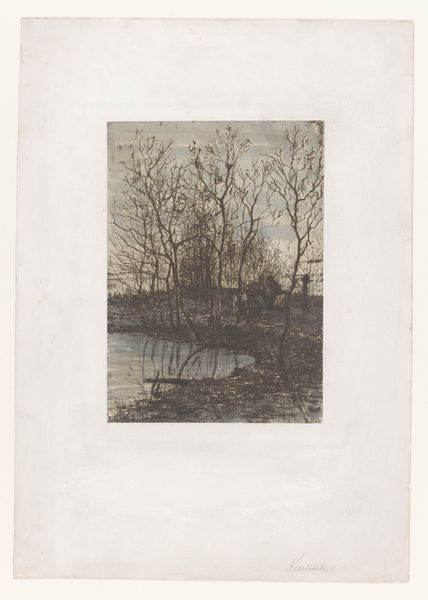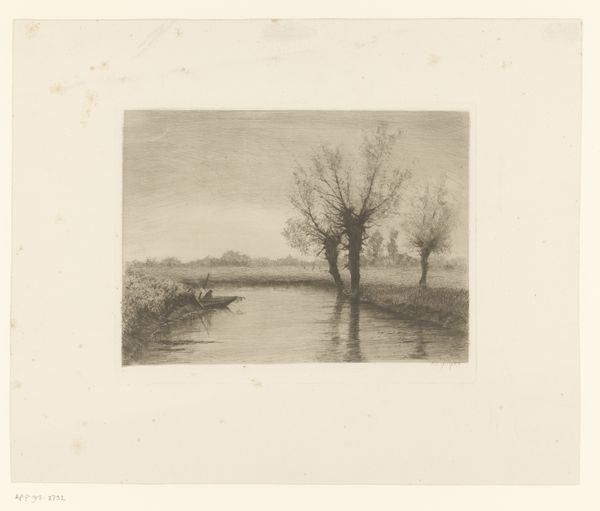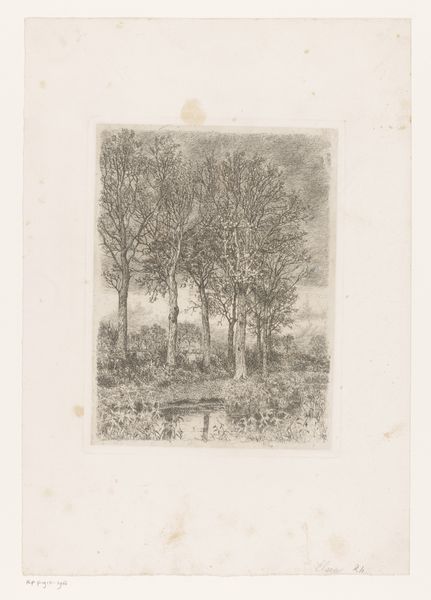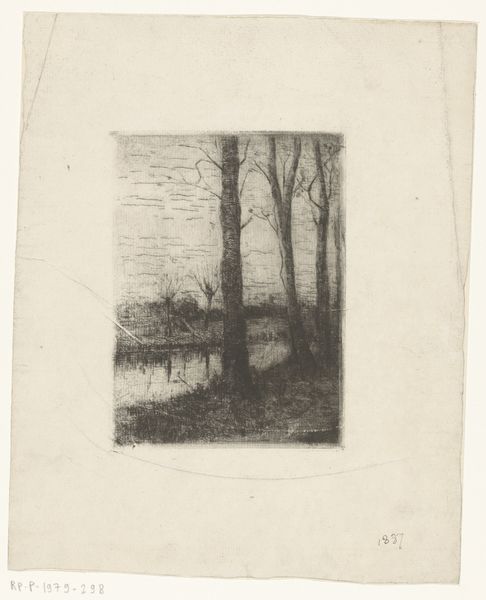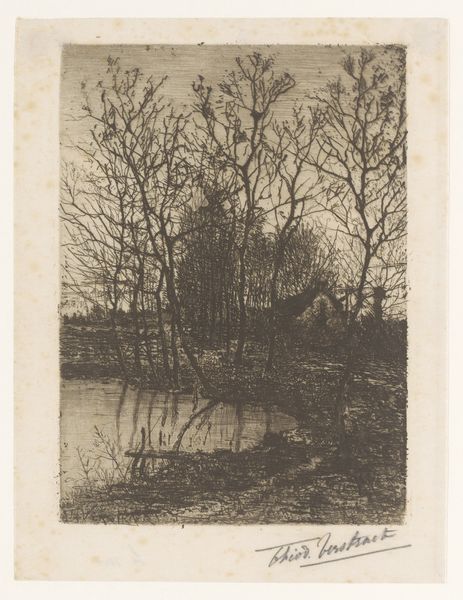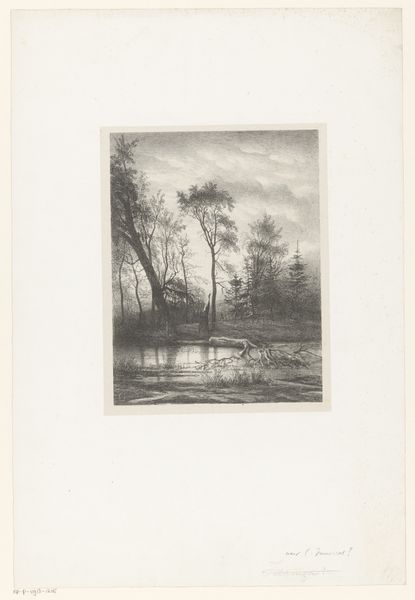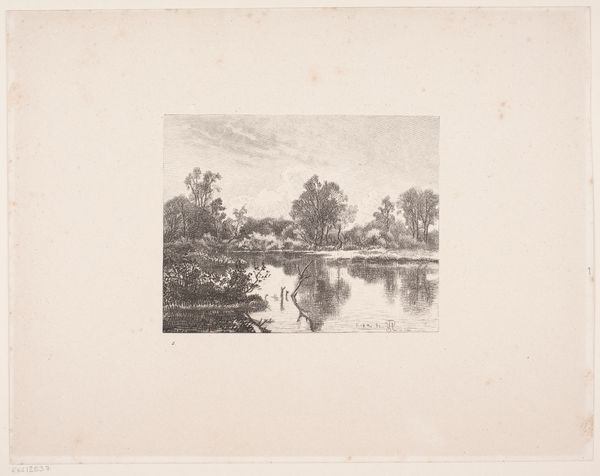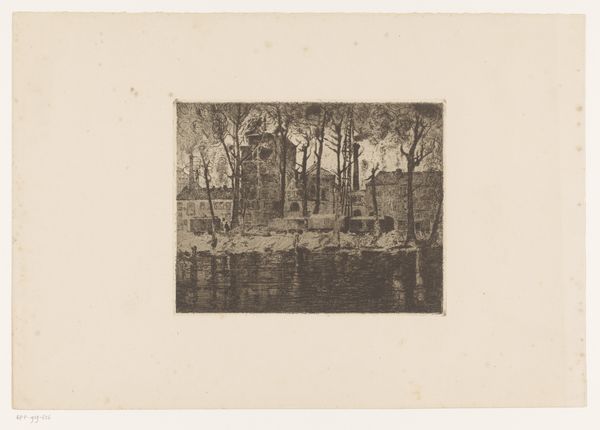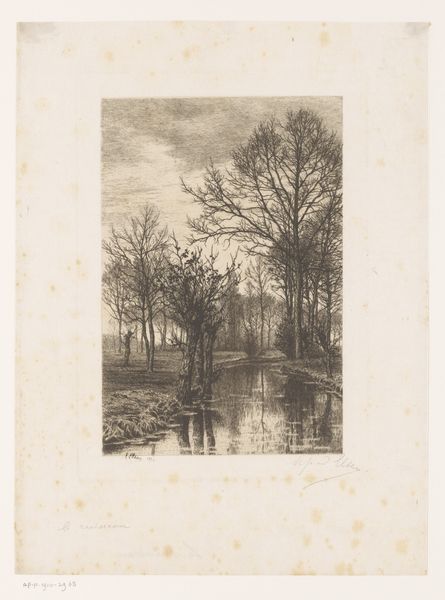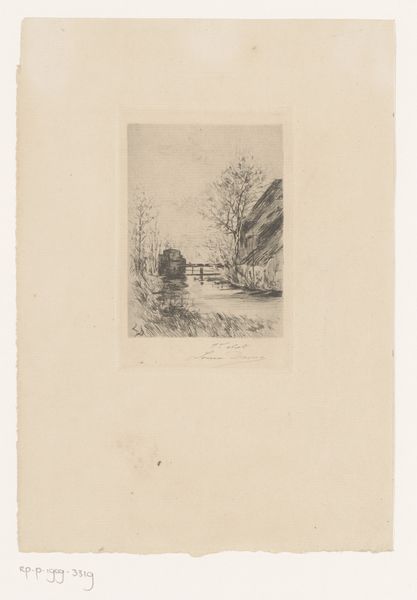
print, etching
#
lake
#
toned paper
# print
#
impressionism
#
etching
#
landscape
#
realism
Dimensions: height 226 mm, width 160 mm
Copyright: Rijks Museum: Open Domain
Editor: This etching, "Vijver bij maneschijn" or "Pond by Moonlight," is attributed to Jules Guiette, dating from 1862 to 1901. There's a stillness to it; a quietness. The bare trees reflected in the water create this ethereal, almost ghostly feel. What strikes you most about this work? Curator: That stillness, I think, speaks volumes. We're not just looking at a pretty landscape. Consider the period: the late 19th century, a time of immense social and political upheaval. The industrial revolution was transforming society, and there was this deep current of anxiety about nature being lost to progress. Editor: So, this quiet pond… Curator: …becomes a space of resistance, or perhaps mourning. Think about who had access to these spaces, both literally and figuratively. Nature, and depictions of it, weren't always neutral. The Romantics idealized it, often ignoring the realities of rural labor, for instance. Does this etching continue that tradition, or does its quietness invite a more critical contemplation? Editor: I hadn't considered that perspective. The lack of people in the scene now feels deliberate. It’s a landscape devoid of labor, of exploitation maybe. Curator: Precisely. It asks us to consider whose gaze is privileged and whose stories are erased. The moon, often associated with femininity and the cyclical, might also be seen as a challenge to the patriarchal structures of the time. Editor: It's interesting how something so seemingly simple can hold so many layers of meaning. I see the image differently now, not just as a depiction of a landscape, but as a commentary on society. Curator: Art is never created in a vacuum, is it? Looking closely, thinking critically - that’s how we uncover these dialogues, even in the quietest of landscapes.
Comments
No comments
Be the first to comment and join the conversation on the ultimate creative platform.
